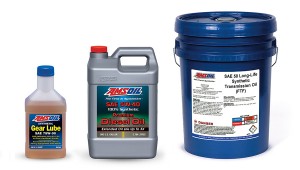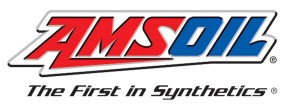 The rising cost of fuel continues to challenge the profitability of delivery services, beverage companies, energy providers and many other types of similar fleet operations. Administrators must often raise prices or apply surcharges to remain competitive, resulting in strained customer relations at best, lost business at worst.
The rising cost of fuel continues to challenge the profitability of delivery services, beverage companies, energy providers and many other types of similar fleet operations. Administrators must often raise prices or apply surcharges to remain competitive, resulting in strained customer relations at best, lost business at worst.
Fleet managers have responded with interest in any products capable of increasing fuel economy. Even slight increases result in significant cost reductions for fleets accumulating tens of thousands of miles annually. Synthetic lubricants continue gaining popularity due to their all-around increased performance compared to regular conventional lubricants. They are recognized as a cost-effective and legitimate contributor to increased fuel economy. To help validate this statement, AMSOIL set out to prove that using their synthetic lubricants in your truck could save you money.
AMSOIL simultaneously compared fuel consumption in two short- to medium-haul diesel trucks owned by Ford Motor Company and operated out of their Rawsonville, Michigan fleet maintenance facility. Testing was conducted in accordance with the SAE J1321 official In-Service Fuel Consumption Test Procedures to ensure accuracy. The procedure’s primary goal is to eliminate all operating and environmental variables that may influence fuel economy. One truck, designated the control vehicle, operated on conventional lubricants throughout the procedure. The other truck, designated the test vehicle, was tested using AMSOIL synthetic lubricants.
 In a study like this, it is critical that the control and test vehicles have specifications as close to identical as possible. AMSOIL selected two identical vehicles from Ford’s Rawsonville fleet. The control vehicle’s gross vehicle weight (truck and trailer) was 47,360 lbs., while the test vehicle weighed 47,200 lbs. Both had approximately 750,000 miles on their odometers. Thorough maintenance further equalized tire condition, brake condition and the overall mechanical integrity of each truck. To further limit variables that might affect fuel economy, each vehicle received new air and fuel filters, equalized accessory settings and new grease on their chassis and drive shafts. The trailers pulled by each vehicle (53’ box vans) demonstrated equally similar specifications, too. After installing new lubricants in the engine, transmission, and front and rear differentials of each vehicle, one with AMSOIL synthetic products and the other with a popular brand of conventional lubricants, the test began.
In a study like this, it is critical that the control and test vehicles have specifications as close to identical as possible. AMSOIL selected two identical vehicles from Ford’s Rawsonville fleet. The control vehicle’s gross vehicle weight (truck and trailer) was 47,360 lbs., while the test vehicle weighed 47,200 lbs. Both had approximately 750,000 miles on their odometers. Thorough maintenance further equalized tire condition, brake condition and the overall mechanical integrity of each truck. To further limit variables that might affect fuel economy, each vehicle received new air and fuel filters, equalized accessory settings and new grease on their chassis and drive shafts. The trailers pulled by each vehicle (53’ box vans) demonstrated equally similar specifications, too. After installing new lubricants in the engine, transmission, and front and rear differentials of each vehicle, one with AMSOIL synthetic products and the other with a popular brand of conventional lubricants, the test began.
To ensure consistency, the control and test vehicles followed identical procedures throughout the test. Each driver became familiar with the route and demonstrated methodical driving habits. During the procedure, both drivers achieved similar rpm prior to shifting and similar throttle positioning during acceleration. Each traveled within two miles per hour of the posted speed limit at all times, engaged the cruise control at the same position along the test route, braked appropriately, and maintained an appropriate following distance to eliminate aerodynamic interaction.
A route representative of real-world, short- to medium-haul operations beginning and ending at Ford’s Rawsonville, Michigan fleet maintenance facility was selected. The 40-mile route included approximately 3.4 miles of city driving and 36.6 miles of highway driving, with vehicle test speeds of 30 mph in the city and 60 mph on the highway. The route was designed to limit the instances of interrupted test speeds due to local traffic.
 When the testing was completed and the numbers were all analyzed, the test proved that the use of AMSOIL synthetic lubricants can increase fuel economy in short- to medium-haul diesel truck applications and, in this case, did by 6.54 percent over the truck using the conventional lubricants. That may not sound like a huge increase, but considering the fact that all they did was replace the lubricants, that is a pretty significant number, especially if you operate a large fleet (those numbers will add up quickly). This 6.54% fuel economy improvement will directly correlate to reduced fuel costs and reduced exhaust emissions, as well.
When the testing was completed and the numbers were all analyzed, the test proved that the use of AMSOIL synthetic lubricants can increase fuel economy in short- to medium-haul diesel truck applications and, in this case, did by 6.54 percent over the truck using the conventional lubricants. That may not sound like a huge increase, but considering the fact that all they did was replace the lubricants, that is a pretty significant number, especially if you operate a large fleet (those numbers will add up quickly). This 6.54% fuel economy improvement will directly correlate to reduced fuel costs and reduced exhaust emissions, as well.
The AMSOIL lubricants used in this study included Premium API CJ-4 5W-40 Synthetic Diesel Oil in the engine, SAE 50 Long-Life Synthetic Transmission Oil in the transmission, and 75W-90 Long-Life Synthetic Gear Lube in the front and rear differentials. Although this study was completed using full-sized semi trucks (Kenworth T800s) and 53’ closed-box trailers, these results can be extrapolated to conclude that the fuel economy benefits would extend to all types of fleet applications and can reduce costs in a variety of scenarios, including small fleets accumulating relatively few daily miles per vehicle and large fleets accumulating significantly more.
To request your free copy of the complete AMSOIL “Diesel Fleet Fuel Economy Study” visit www.oiltwins.com/10-4 or give the “Oil Twins” (Casey and Andy Jones), a call at 1-888-OIL-TWINS. They can not only answer all of your questions, but they can also get you the AMSOIL products you need to start saving money today!

2 Comments
Looking for the ICC 007 article. International Harley Davidson.
You will find it in the Troys Treasures archives – find it along the right side of the site. From there, find that article.